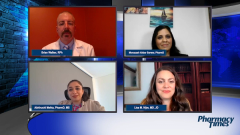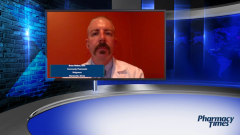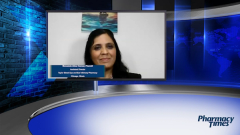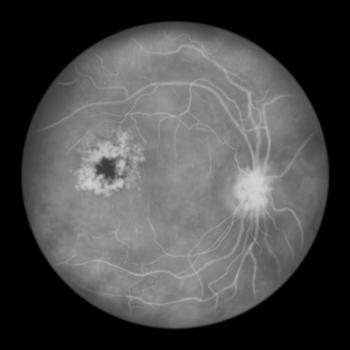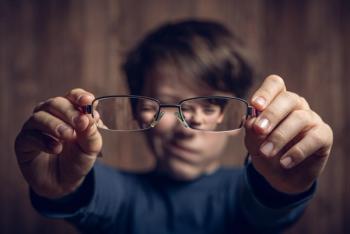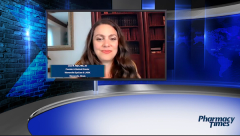
DED From the Pharmacist Perspective
A panel of experts discuss how pharmacists can play a role in the nonpharmacologic treatment of dry eye disease.
Episodes in this series

Abhiruchi Mehta, PharmD, MS: My next question is for Brian. If patients want to treat their dry eye and don’t know where to start, how can pharmacists play a role? How can they assist?
Brian Walker, RPh: Dry eye is very important to recognize and treat, and pharmacists have the unique ability to see patients who have this condition and want to do something before making a doctor’s visit. The first step in figuring out what the patient needs is to ask open-ended questions. [This] allows your customers to provide you with the bigger picture. Many times, people see you as being busy and may not want to bother you, so they’re not going to want to answer those questions. However, you want to spend time with them to ask those questions as opposed to simply pointing to the aisle with all the preparations—especially since those things can be quite confusing to people who don’t exactly know what they’re looking for. Also, asking good questions helps you rule out the possibility of a serious eye condition that needs immediate doctor’s attention, like an infection, eye pain, floaters, or sudden vision loss. Some of those things play a big role in getting them seen immediately. For example, bacterial conjunctivitis or pink eye has similar complaints to dry eye (eg, itching, burning, redness, sensitivity to light) and some signs and symptoms that are not similar (eg, excess tearing, green or white discharge, swollen lymph nodes, crusting). You want to recognize some of those things and make a better decision to not send them home with just [artificial] tears.
Monazzah Akbar Sarwar, PharmD: I agree with everything that Brian said. Pharmacists are the most accessible and frequently visited members of the health care team. Talking to the local pharmacist is a great place to start. It’s important to recognize and treat dry eyes as early as possible because it essentially comes down to what Dr Nijm said: the quality of life for the patient. Dry eyes make you feel uncomfortable, and they cause that burning and stinging sensation. When you have that in 1 part of your body—in this case the eyes—the rest of the body also feels it. In general, the primary goal for dry eye treatment is to help alleviate, control, and prevent those symptoms and give back some quality of life to the patient.
In addition, there are consequences if it’s left untreated because tearing protects the surface of our eyes from infection. Without adequate tearing, you have an increased risk of eye infection. If it’s left completely untreated, dry eye can lead to other things, like eye inflammation, abrasion of the corneal surface, and, in extreme cases, vision loss. There’s a definite risk of progression, so catching it early on is important.
Lisa M. Nijm, MD, JD: I think that’s a really important point, that the quality of life and the life of the patient are of utmost importance. The fact that dry eye affects so many other things and ways that eye conditions heal is a really important point. It is our first defense on the cornea [to protect against] many pathogens, and patients who have had a hard time healing from other surgeries may have underlying dry eye that’s not treated.
Brian Walker, RPh: There are a lot of things that you can do to help with your dry eye symptoms. Warm compresses or warmth on your eyes for maybe 10 or 15 minutes with a wash cloth can help loosen up the glands that produce tears. There are glands that produce watery tears, whereas others produce oily tears. You want to make sure that both of these types of glands are not inflamed and are flowing properly. I don’t think anybody has ever said that or talked about this before, but eye scrubs that have simple eye-specific cleansers or soaps, and even baby shampoo, can be used to help clean the eye. There are a couple of other spray products that help to cleanse the eye and ensure that a pimple or a clogged pore [is not involved].
Monazzah Akbar Sarwar, PharmD: Educate the patient about avoiding environmental factors to help improve any symptoms of dry eye disease. Talk to them about avoiding excess wind, smoke, or dust in the face; using a humidifier in the house; and taking some breaks from computers and screens. We’ve all had a lot of screen time this past year. Patients are always looking for what nonmedicinal, nonpharmacologic things they can do, and these interventions will help to alleviate symptoms. They won’t completely control them, but they’ll help somewhat.
Brian Walker, RPh: One of the things that I ask of my patients is, “Are you dehydrated? How much water do you drink?” A lot of times, people are just not drinking enough water, and if you don’t have water, then your body processes don’t work properly.
Transcript edited for clarity.
Newsletter
Stay informed on drug updates, treatment guidelines, and pharmacy practice trends—subscribe to Pharmacy Times for weekly clinical insights.

